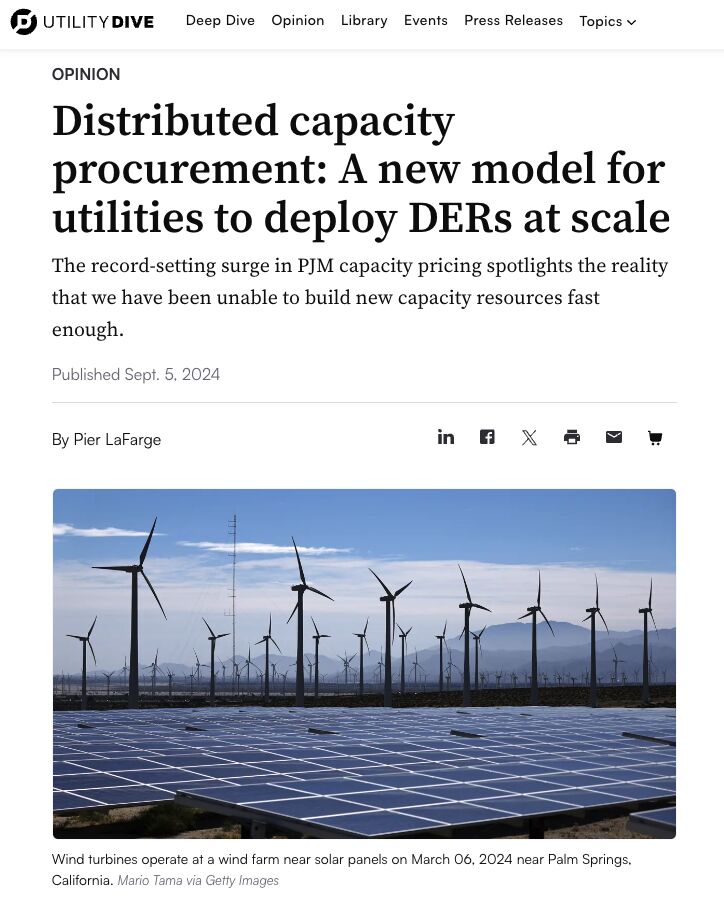
The energy industry is at a critical inflection point. Aging power plants are retiring, new generation projects face interconnection challenges, and electricity demand is spiking due to manufacturing growth, data centers, and electrification. As a result, baseline power capacity prices in markets like PJM have surged 9x in just the past year. We simply aren't building new capacity fast enough to keep up.
However, an innovative new model called distributed capacity procurement (DCP) could be the key to overcoming these challenges, argues Sparkfund CEO Pier LaFarge in a recent Utility Dive article.
Under the DCP model, utilities would take the lead on strategically deploying distributed energy resources (DERs) like solar and batteries as grid assets, based on where they provide the most value. By integrating DERs into grid planning as a capacity resource, utilities can alleviate grid congestion, accelerate new capacity, lower costs, and unlock huge value in unprecedented ways.
As LaFarge explains, utilities are uniquely positioned to drive DER deployment at scale, much faster than third-party approaches. Utilities deeply understand grid needs and can site DERs for maximum benefit. Early utility programs are already demonstrating 10x faster enrollment than customer-owned models.
What's more, the DCP model aligns with key policy goals around affordability, reliability, and decarbonization. By deferring transmission and distribution upgrades and reducing reliance on fossil peakers, DCP could lead to significant cost savings. It also helps solar and storage developers by turning utilities into willing buyers, unconstrained by interconnection queues.
To be clear, DCP is not a silver bullet — much more is needed, including new centralized generation and transmission buildout. But DERs deployed through utility-led DCP can play a major role, offering faster and cheaper capacity than many alternatives.
The recent PJM price spike is a wake-up call demanding bold solutions. The DCP model empowers utilities to become indispensable partners in navigating the energy transition. By embracing DERs as a grid-scale tool, we can build a cleaner, more affordable, more resilient grid - and a brighter future for all.
For more, read the full article on Utility Dive. The DCP model represents an exciting path forward that stakeholders across the industry should explore.